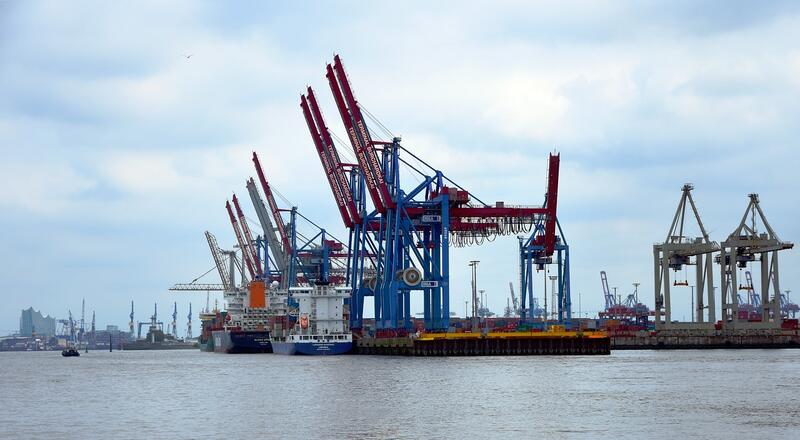Sustainable Transformation: Decarbonization Strategies for Construction of water projects
This article explores decarbonization strategies for construction of water projects to achieve sustainable transformation and combat climate change.

Introduction
Decarbonisation is the process of reducing carbon emissions to zero or near-zero levels. It is an essential step towards mitigating climate change and achieving a sustainable future. The construction of water projects sector is responsible for building and maintaining water supply systems, dams, reservoirs, and other water infrastructure. This sector is a significant contributor to carbon emissions due to the use of energy-intensive machinery, transportation of materials, and construction activities. Therefore, decarbonisation in this sector is crucial to reduce its carbon footprint and contribute to global efforts to mitigate climate change.
What is Decarbonisation in the Construction of Water Projects Sector and Why is it Important?
Decarbonisation in the construction of water projects sector involves reducing carbon emissions associated with the construction, operation, and maintenance of water infrastructure. It aims to achieve this by adopting sustainable practices, using renewable energy sources, and reducing the use of fossil fuels. Decarbonisation is essential in this sector for several reasons. Firstly, it can help to reduce the sector's carbon footprint, which is significant due to the energy-intensive nature of construction activities. Secondly, it can contribute to global efforts to mitigate climate change by reducing greenhouse gas emissions. Thirdly, it can help to improve the sustainability of water infrastructure by reducing its environmental impact.
What are the Main Sources of Carbon Emissions in the Construction of Water Projects Sector?
The construction of water projects sector is a significant contributor to carbon emissions due to several factors. Firstly, the use of energy-intensive machinery such as excavators, bulldozers, and cranes emits carbon dioxide (CO2) and other greenhouse gases. Secondly, the transportation of materials and equipment to construction sites also contributes to carbon emissions. Thirdly, the construction of concrete structures such as dams and reservoirs requires a significant amount of energy, which results in carbon emissions. Finally, the operation and maintenance of water infrastructure also contribute to carbon emissions through the use of energy for pumping, treatment, and distribution of water.
How Can We Reduce Carbon Emissions in the Construction of Water Projects Sector?
Reducing carbon emissions in the construction of water projects sector requires a combination of strategies. Firstly, the use of sustainable practices such as reducing waste, recycling materials, and using sustainable building materials can help to reduce carbon emissions. Secondly, the use of renewable energy sources such as solar, wind, and hydropower can help to reduce the use of fossil fuels and therefore reduce carbon emissions. Thirdly, the adoption of energy-efficient technologies such as LED lighting, efficient pumps, and motors can help to reduce energy consumption and therefore reduce carbon emissions. Finally, the use of low-carbon concrete and other sustainable building materials can help to reduce the carbon footprint of construction activities.
What are the Challenges Facing Decarbonisation in the Construction of Water Projects Sector?
Decarbonisation in the construction of water projects sector faces several challenges. Firstly, the adoption of sustainable practices and renewable energy sources may require significant investment, which may be a challenge for some organizations. Secondly, the availability and accessibility of renewable energy sources may be limited in some areas, making it difficult to adopt these technologies. Thirdly, the adoption of sustainable practices and technologies may require changes in the way construction projects are designed and implemented, which may require significant changes in the way the sector operates. Finally, the lack of awareness and understanding of the importance of decarbonisation in the sector may be a significant challenge, as it may limit the adoption of sustainable practices and technologies.
What are the Implications of Decarbonisation for the Construction of Water Projects Sector?
Decarbonisation in the construction of water projects sector has several implications. Firstly, it can help to reduce the sector's carbon footprint and contribute to global efforts to mitigate climate change. Secondly, it can help to improve the sustainability of water infrastructure by reducing its environmental impact. Thirdly, it can create opportunities for innovation and investment in sustainable technologies and practices. Finally, it can help to improve the resilience of water infrastructure to climate change by reducing its vulnerability to extreme weather events and other climate-related risks.
Conclusion
Decarbonisation in the construction of water projects sector is essential to reduce its carbon footprint and contribute to global efforts to mitigate climate change. The sector's significant contribution to carbon emissions makes it a critical area for decarbonisation efforts. Reducing carbon emissions in this sector requires a combination of sustainable practices, renewable energy sources, and energy-efficient technologies. However, the adoption of these strategies may face several challenges, including limited availability of renewable energy sources, lack of awareness and understanding of the importance of decarbonisation, and significant investment requirements. Decarbonisation in the construction of water projects sector has several implications, including improving the sustainability of water infrastructure, creating opportunities for innovation and investment, and improving the resilience of water infrastructure to climate change.